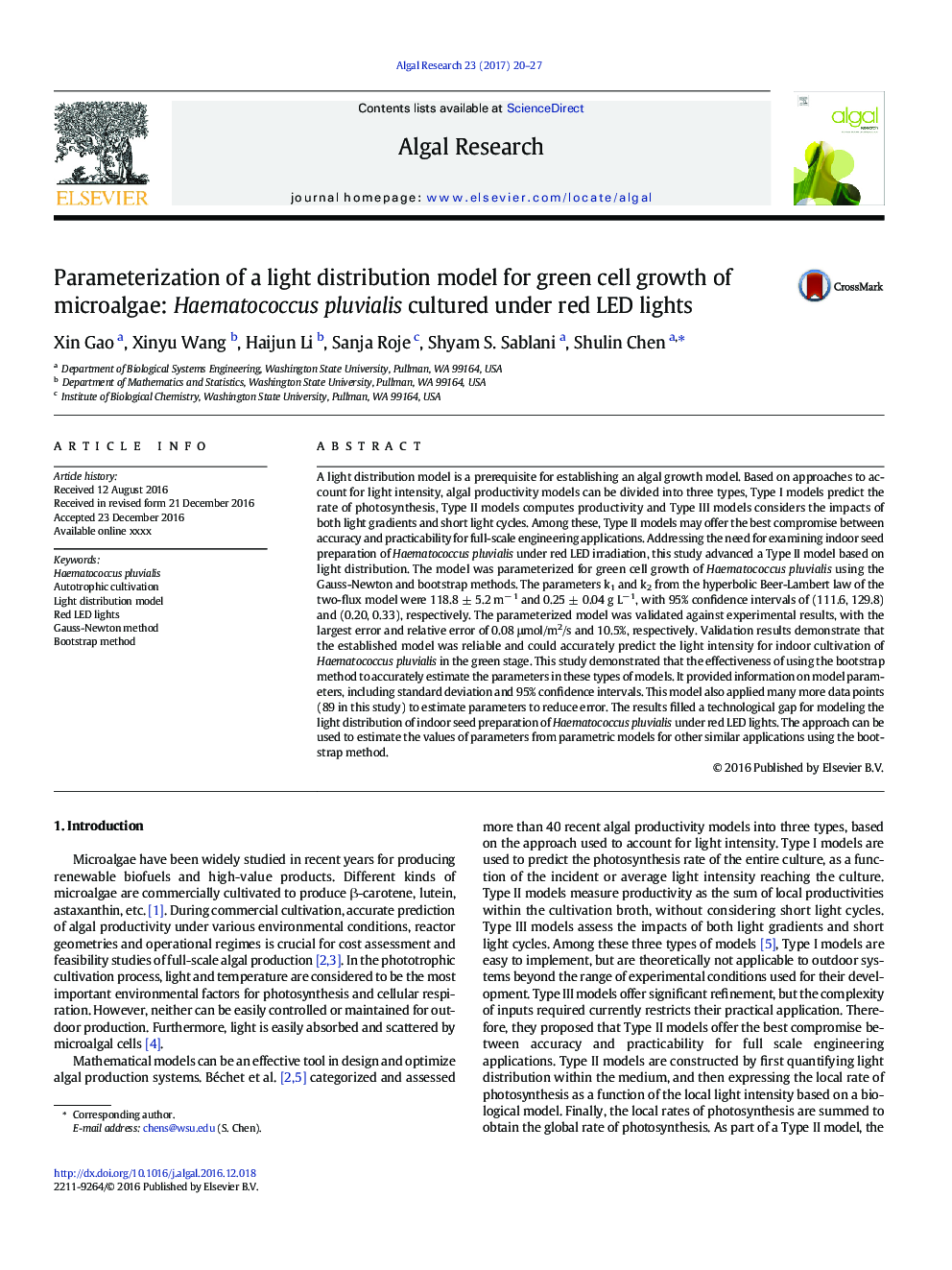| Article ID | Journal | Published Year | Pages | File Type |
|---|---|---|---|---|
| 5478334 | Algal Research | 2017 | 8 Pages |
Abstract
A light distribution model is a prerequisite for establishing an algal growth model. Based on approaches to account for light intensity, algal productivity models can be divided into three types, Type I models predict the rate of photosynthesis, Type II models computes productivity and Type III models considers the impacts of both light gradients and short light cycles. Among these, Type II models may offer the best compromise between accuracy and practicability for full-scale engineering applications. Addressing the need for examining indoor seed preparation of Haematococcus pluvialis under red LED irradiation, this study advanced a Type II model based on light distribution. The model was parameterized for green cell growth of Haematococcus pluvialis using the Gauss-Newton and bootstrap methods. The parameters k1 and k2 from the hyperbolic Beer-Lambert law of the two-flux model were 118.8 ± 5.2 mâ 1 and 0.25 ± 0.04 g Lâ 1, with 95% confidence intervals of (111.6, 129.8) and (0.20, 0.33), respectively. The parameterized model was validated against experimental results, with the largest error and relative error of 0.08 μmol/m2/s and 10.5%, respectively. Validation results demonstrate that the established model was reliable and could accurately predict the light intensity for indoor cultivation of Haematococcus pluvialis in the green stage. This study demonstrated that the effectiveness of using the bootstrap method to accurately estimate the parameters in these types of models. It provided information on model parameters, including standard deviation and 95% confidence intervals. This model also applied many more data points (89 in this study) to estimate parameters to reduce error. The results filled a technological gap for modeling the light distribution of indoor seed preparation of Haematococcus pluvialis under red LED lights. The approach can be used to estimate the values of parameters from parametric models for other similar applications using the bootstrap method.
Related Topics
Physical Sciences and Engineering
Energy
Renewable Energy, Sustainability and the Environment
Authors
Xin Gao, Xinyu Wang, Haijun Li, Sanja Roje, Shyam S. Sablani, Shulin Chen,
